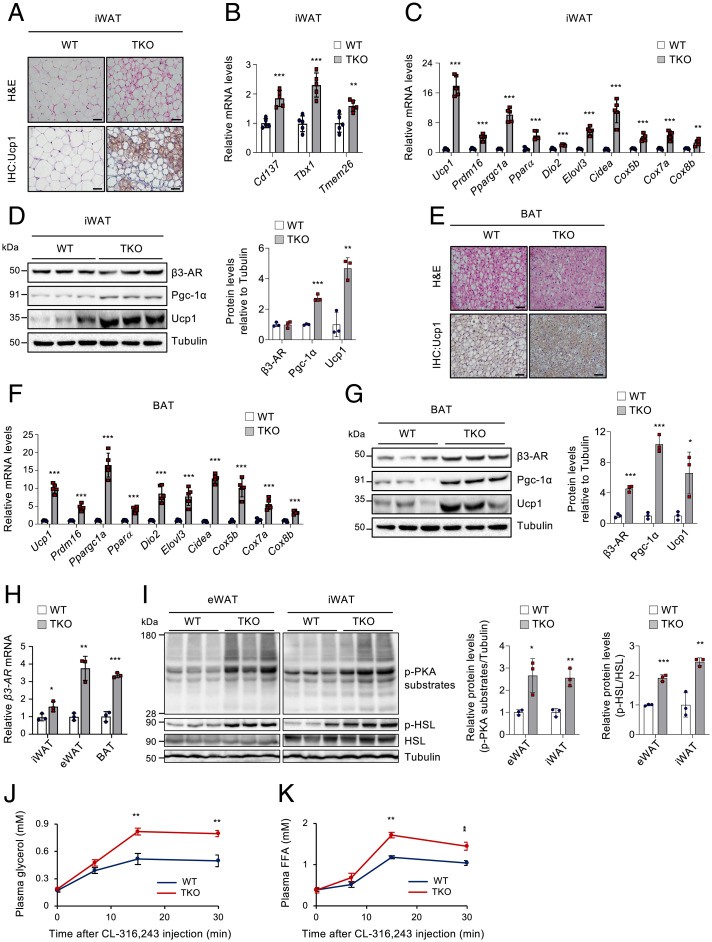Fig. 3.
Adipose TET deficiency increases the responsiveness to β3-AR agonist in vivo. WT and Tet TKO mice were administered CL-316,243 (1 mg/kg body weight/d) intraperitoneally daily for three consecutive days. (A) Representative hematoxylin and eosin (H&E) (Top) and immunohistochemical staining for Ucp1 (Bottom) in iWAT of CL-316,243–treated mice. n = 4. (Scale bar, 50 μm.) (B and C) mRNA levels of beige adipocyte–selective genes (B) or thermogenesis-related genes (C) relative to Gapdh in iWAT of CL-316,243–treated mice. n = 5. (D) Immunoblot analysis (Left) and quantification (Right) of β3-AR, Pgc-1α, and Ucp1 proteins in iWAT of CL-316,243–treated mice. α-Tubulin served as a loading control. n = 3. (E) Representative H&E (Top) and immunohistochemical staining for Ucp1 (Bottom) in BAT of CL-316,243–treated mice. n = 4. (Scale bar, 50 μm.) (F) mRNA levels of thermogenesis-related genes relative to Gapdh in BAT of CL-316,243–treated mice. n = 5. (G) Immunoblot analysis (Left) and quantification (Right) of β3-AR, Pgc-1α, and Ucp1 proteins in BAT of CL-316,243–treated mice. α-Tubulin served as a loading control. n = 3. (H) β3-AR mRNA levels relative to Gapdh in ATs (iWAT, eWAT, or BAT) of CL-316,243–treated mice. n = 3. (I) Immunoblot analysis (Left) and quantification (Right) of phosphorylated (p)-PKA substrates, p-HSL, and total HSL proteins in eWAT or iWAT of CL-316,243–treated mice. α-Tubulin served as a loading control. n = 3. (J and K) In vivo lipolysis assay in WT and Tet TKO mice stimulated with CL-316,243. Plasma glycerol (J) and free fatty acid (FFA) (K) levels were quantified at the indicated time points. n = 3. All data are presented as the mean ± SD. The P values were determined by unpaired Student’s t test. *P < 0.05, **P < 0.005, ***P < 0.0005 versus WT. IHC, immunohistochemistry.

